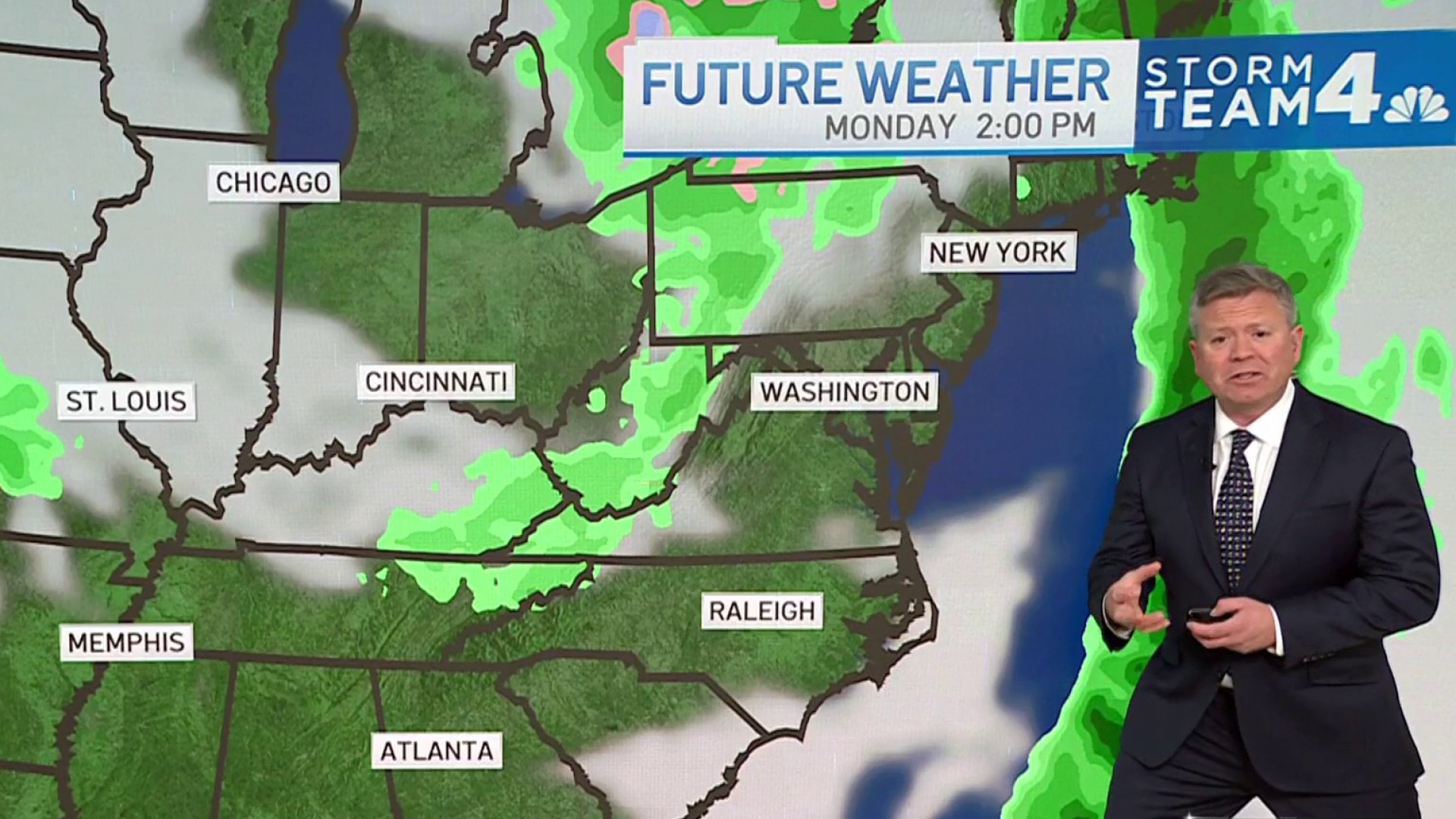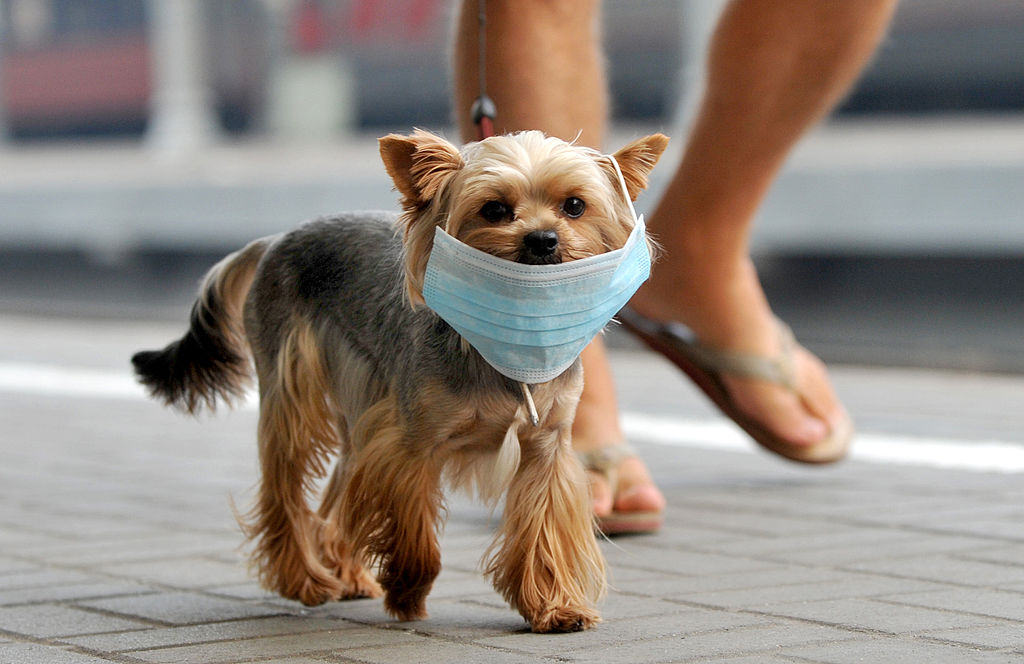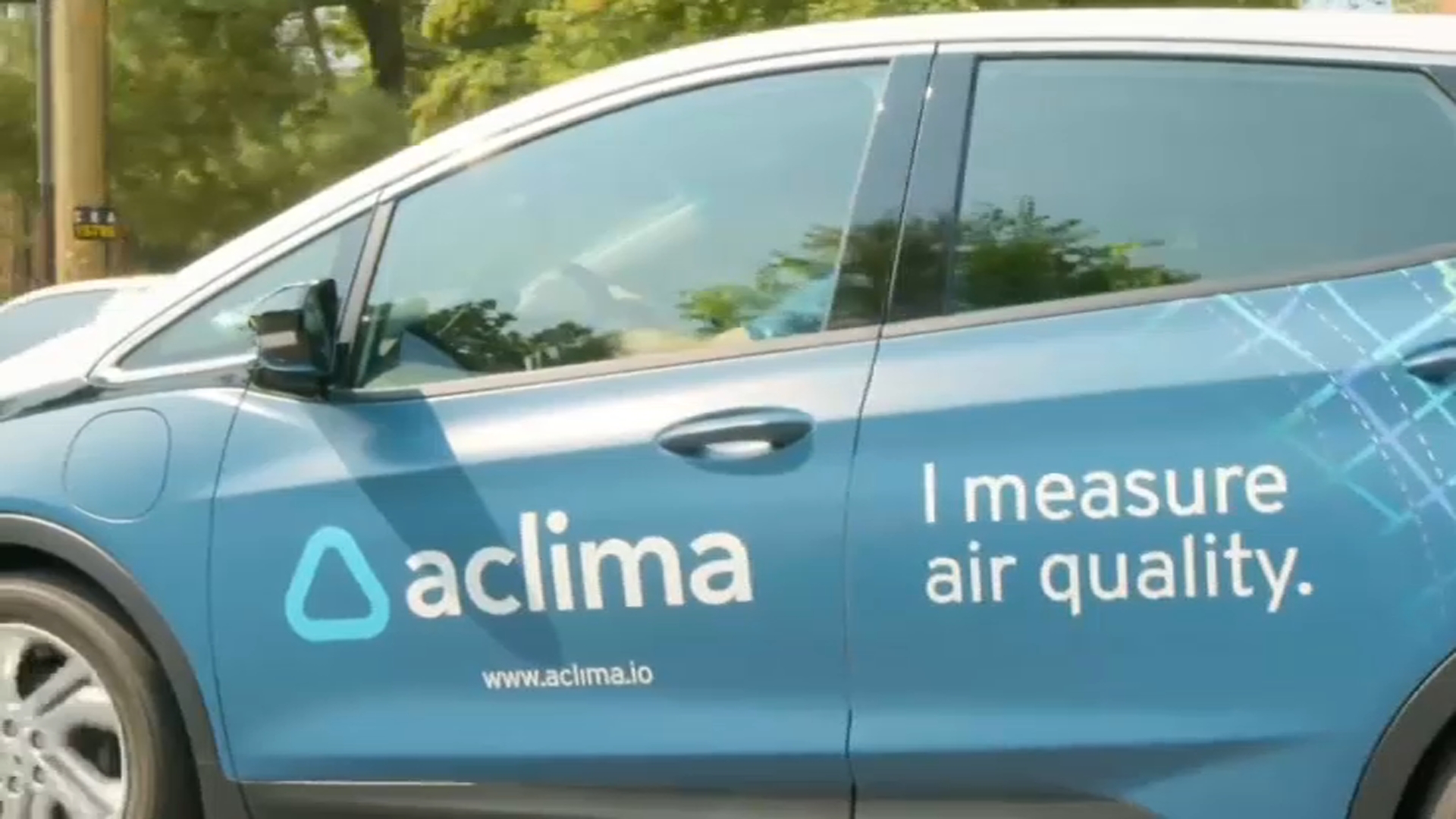Air quality worsened to code red Thursday in the Washington, D.C., area because of smoke from Canadian wildfires, posing a health risk to anyone who spends time outside. It comes less than three weeks after D.C. was gripped by the worst air quality on record.
D.C. had the worst air quality in the world at 11 a.m. Thursday, according to IQAir.
Everyone is advised to stay inside, especially older adults, children, teens and people with heart or lung disease. Experts say to choose less strenuous activities or avoid working outdoors if possible to limit inhaling pollution.
The pollutant is fine particulate matter (PM2.5) that can be inhaled into the lungs, according to the American Lung Association. Those small particles in smoke can irritate the eyes, nose and throat, and can affect the heart and lungs, making it harder to breathe.
We've got the news you need to know to start your day. Sign up for the First & 4Most morning newsletter — delivered to your inbox daily. >Sign up here.
Use the map below to check air quality in your area.
Map: Check your air quality
The air quality may change throughout the day and from neighborhood to neighborhood as wildfire smoke wafts over much of the U.S. About 127 million people across the United States were under air quality alerts early Thursday.
Across Canada, 490 fires are burning with 255 fires considered to be out of control in the worst wildfire season on record.
The National Weather Service said there appeared to be "no end" in sight to impacts from the wildfires, according to NBC News.
The thick haze reduced visibility and enveloped anything outdoors in a gray-orange tint. An acrid, burning smell pervaded the District, and some people resorted to N95 masks to keep themselves safe.
“You don’t want to get that stuff in you lungs,” said one person wearing a mask near the National Mall.
The Smithsonian Folklife Festival canceled its opening ceremony and scaled back other programs. D.C.’s Department of Recreation canceled outdoor activities including all fitness classes and its Fair Weather Camps, which run completely outdoors.
Wolf Trap's sold out Robert Plant and Alison Kraus concert was postponed until next summer.
Prince George's County's Parks and Recreation Department cancelled all of its outdoor programming Thursday afternoon.
A southern flow that moves in on Friday is expected to help push the smoke out of the area, according to Storm Team4.
Another air quality alert is set to be in effect Friday, but it may not be as severe, Storm Team4 Meteorologist Amelia Draper said.
“At least a code orange air quality day, but we could have a more serious code red air quality day, so stay tuned,” Draper said.
A code orange air quality alert means the air is unhealthy to breathe for sensitive groups including children, elderly people and those with heart and respiratory issues.
The air quality in the D.C. area this week was not as bad as it was on June 7 and 8, when levels reached code purple and even code maroon, which is categorized as very unhealthy to dangerous air.
At one point D.C.’s air quality was the worst in the world. Schools and day cares kept children inside, the Smithsonian National Zoo closed and flights were delayed.
And this is something we will continue to experience with our changing climate.
The warming planet will produce hotter and longer heat waves, making for bigger, smokier fires, said Joel Thornton, professor and chair of the Department of Atmospheric Sciences at the University of Washington.
How can I stay safe from the smoke in DC?
The best way to protect yourself from the negative health effects of wildfire smoke is to avoid breathing it in — which means staying inside as much as possible.
If you typically work out outside, it could be a good day to hit the gym instead. It's also not a good day to take your kids to the park or the pool, especially if they have allergies, asthma or chronic health issues.
Pets should also stay inside when the air is unhealthy.
“Other mammals, they suffer from many of the same lung conditions that humans do,” Dr. Purvi Parikh, an allergist and immunologist at the Allergy & Asthma Network, told NBC News.
It's a good idea to use the "recirculate" air button in your car.
"This keeps the outside air OUT and keeps sending the inside air through the filters," Storm Team4's Chuck Bell said.
If you need extra protection from smoky conditions, the Centers for Disease Control recommends finding a room you can seal off from outside air. Consider a portable air cleaner or a filter to keep that room clean.
There are ways to create an air filter yourself using a box fan and furnace filters you can purchase at most grocery stores.
Respirators, like N95s, can help reduce your smoke exposure if you have to be outside in poor air quality conditions, according to the CDC.
What do air quality codes mean?
The Environmental Protection Agency monitors how polluted or clear the air is with the Air Quality Index, or AQI. The scale runs from 0 to 500, and the higher the AQI, the more pollution there is in the air.
Each range on the AQI is assigned a color. Green is the zero to 50 part of the range, and qualifies as good air quality; yellow is 51 to 100 and qualifies as moderate air quality. Code orange ranges from 101 to 150 and means the air is unhealthy for sensitive groups. A code red, from 151 to 200, is unhealthy for everyone.
Code purple means everyone is at risk of health impacts. Once you get to 301 and higher, people are more likely to be sickened. See the chart below for the full range of the AQI.

Wildfires release a lot of pollution into the atmosphere. The fine particulate matter in the smoke is especially bad for human lungs and can cause decreased lung function, throat irritation and shortness of breath, according to the EPA. It can also cause bronchitis and asthma, according to CNBC.
According to research from Stanford University, being "exposed to wildfire smoke causing AQI of 150 for several days is equivalent to about seven cigarettes a day if someone were outside the whole time."
Air quality measurements can differ from state to state and county to county, and over time throughout the day.
Is poor air quality rare in DC?
We’re in unprecedented territory, Storm Team4 Meteorologist Amelia Draper said.
Poor air quality days in the D.C. area in the past were previously linked to ozone pollution. As car technology has changed, that pollution has lessened.
Before summer 2023, the region had not seen a code red air quality day, excluding those linked to fireworks, since Feb. 19, 2011.
"I think this is going to be a common topic for us here this summer, of our poor air quality, at least our hazy skies," Draper said.
The Associated Press contributed to this story.
Stay with NBC Washington for more details on this developing story.
Correction (June 29, 2023, 3:22 p.m.): An earlier version of this article misstated one of D.C.'s previous bad air quality days. They were June 7 and 8.
News4 sends breaking news stories by email. Go here to sign up to get breaking news alerts in your inbox.




